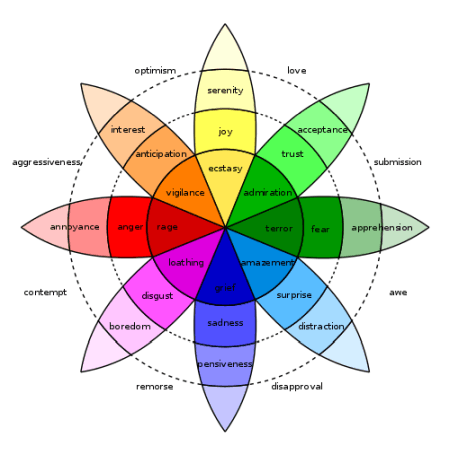It is well accepted that business decision making is based not just on cold, hard reason; but also on emotions. We spend more of our waking hours at work than at home; more time with our colleagues than with our friends and families. Our jobs and careers are intrinsically emotional: they determine the lives we lead; the people we meet; the places we live and the achievements we realise. How could we not feel and convey emotion in the workplace? This being the case, it is surely inevitable that our emotions influence the decisions we make at work.
At B2B International, we explore the human factors that, in combination with rational issues, drive business decisions. This allows us to recommend to our clients strategies that are humanly relevant. Forbes Magazine, a frequent commentator on this subject, makes the case that emotions in business decision making are not only unavoidable; they are beneficial, indeed necessary. The emotional decision maker is more in tune with the people his or her decisions effect, and – counter-intuitively – more considered. Too much stoicism in the workplace is damaging. Emotions in business should be regarded not as sinful defects that render us erratic; rather they drive action and help turn bad decisions into good ones. Without the emotion of frustration, would we really be driven to improve? Without excitement, would we try out that new supplier?
The real question is not whether business decision making is emotional; it is how. Which emotions drive business decisions, and notably PURCHASE decisions? The starting point for this analysis is surely an examination of the emotions that we as humans feel. What are the non-rational factors that make us who we are? Aristotle believed that there were 9 such factors; Darwin stated eight. We have chosen to refer to Robert Plutchik, who in 1980 opined that the human state comprised 8 primary bipolar emotions: joy versus sadness; anger versus fear; trust versus disgust; and surprise versus anticipation. These are displayed on his Wheel of Emotions, which presents each emotion in degrees of intensity, as represented by the intensity of the colour. The model goes on to identify the state that is reached by various blends of emotions. So for example where boredom meets annoyance, there is contempt. Where serenity meets acceptance, there is optimism.

Figure 1: Plutchik’s Wheel of Emotions
In 3,000+ studies of business decision makers, we have identified, analysed and helped clients target every emotion on Plutchik’s wheel. When it comes to being the chosen supplier, it is important to instil in the target customer one of the emotions in the top three points of the wheel. The customer must feel interest in your brand story and your offer. Equally, they must trust your brand, your business and your people. And yes, there must be some joy (vindication if you prefer) when the decision is taken to buy from your business; and thereafter an enjoyment of working with you. Think here of the Production Manager who discovers that your component makes their factory more efficient; the CEO who finds your consultancy improves your business.
But the emotional response is strongest when these feelings blend with each other over time: optimism is generated throughout the sales process and as the relationship with your team begins. At this point the buyers sees the results you have helped them achieve and infers that you can continue to improve their business in the future. Love for working with your business as trust deepens and the enjoyment develops. The customer may ultimately submit to a long-term, sole-supplier agreement with your firm and never look elsewhere.
The polar opposites of these emotions are found at the bottom of the wheel; these are the negative emotions that will drive a customer away from a supplier as they react to having their expectations disappointed. A customer can react as emotionally to a supplier causing them a rollicking by their boss or causing their machine to break down as they would to disappointment in his or her personal life. The humiliation of having chosen the wrong supplier – and the consequences to oneself personally – are often magnified in a professional context.
In summary, we observe every human emotion in our studies of business-to-business decision making.
Finally however, some words of caution:
Emotional needs supplement rational needs rather than supplanting them
We must recognise that emotions are in addition to (in fact usually in response to) rational factors, not instead of them. When a customer feels disappointment or anger, it is typically because a ‘rational’ requirement such as quality, delivery or responsiveness has not been met. When a customer feels joy, it is because their job has been made easier or better as a result of those same needs being satisfied.
The Prominence of System 2 thinking
Our 3,000+ studies show us that system 2 thinking is dominant in business decision making; the decision – whilst emotional – tends to be conscious and considered. There are many reasons for this, notably the complexity of the business decision making and the accountability instilled by a professional environment. Professional self-preservation tends to mean that more thought goes into decisions we are employed to make as opposed to decisions we choose to make as individuals. But there are exceptions to this rule: notably low value, low importance items (think paperclips or tea-bags) and repeat purchases of consumables. These may be bought ‘unthinkingly’ based on convenience or immediacy of availability.
Fear and Inertia
When system 2 thinking and workplace dynamics are mixed, fear can thrive. In b2b markets, the strategic importance of the product and history with the supplier often result in fear of change. In markets where product quality is good, the powerful emotion of fear can be the number one preventer of business growth.



